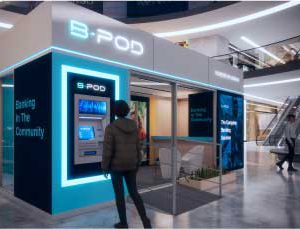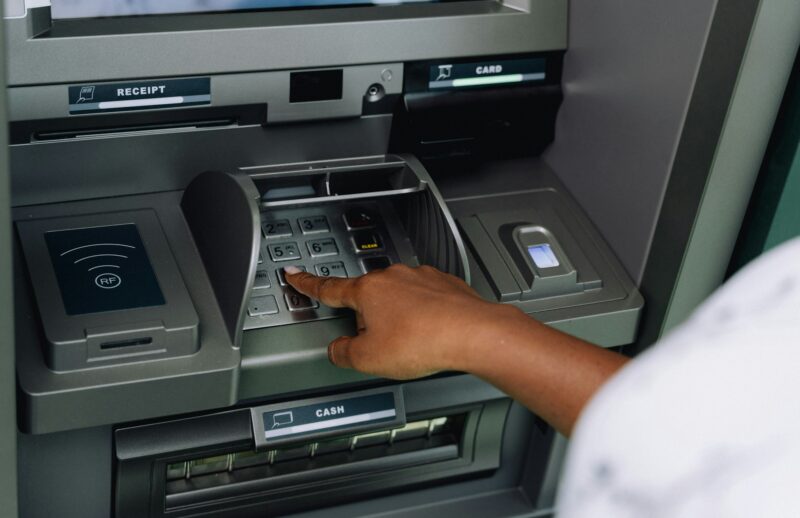To learn more about Brinks AMS end-to-end ATM Outsourcing solution from a single trusted supplier, get in touch with us today!
How outsourcing ATM management can lead to significant cost savings for banks and financial institutions

Tuesday 30th April 2024
Interview with David Dove, EVP & President of Brink’s Global ATM Cash Management Services
What challenges do banks face today?
The biggest challenge that banks are facing, and this is across the globe, is cost. The pandemic changed the world as we know it, and ATM transaction volume is not immune to these changes. Since COVID, volumes at ATMs have declined by about 10-20%. Some markets are better than others, but in general, the decline is showing up everywhere. ATMs have a high fixed cost component, and when transaction volumes decline, unit costs increase. Add the kind of inflation that we have been seeing, again almost everywhere, and what results is a pretty significant and highly visible cost challenge.
Why would banks outsource their ATM management?
The principal reason, as outlined above, is to reduce cost. This is not a channel that banks can just shut down. Even in markets where the use of cash has declined (and that’s not everywhere), consumers depend on conveniently located ATMs as a cash access and servicing point. From a broader perspective, most banks either have, or are in the process of, transforming their branches to more of a sales center and less of a transaction center. As a consequence, migrating cash transactions to an automated channel like ATMs is critical to this migration.
So, given the importance of the channel but faced with significantly increased cost, the imperative is clear – keep the footprint of cash access points but reduce the cost of owning and operating it.
As I’ve travelled around the world and spoken with dozens of banks, this imperative has taken on a very different (and new) characteristic. Specifically, some banks now want to turn their ATMs into a profit center. Although I admire the aspiration, I’m not confident that most banks will be able to pull this off. Interchange rates around the globe have fallen over the past decade or more, so this revenue source alone is not sufficient to make the ATM channel profitable. In addition, many markets around the globe do not have any direct charges to consumers for using ATMs, and even in those markets that do allow it, many banks are loathe to turn on this fee for fear of reputational damage. So, the question of how to generate sufficient revenue at the ATM remains open. In addition, ATMs have historically been a servicing channel for customers – never intended, structured or run as a profit center.
You can see why I’m not very confident that banks can really ever get there… saying you want your ATMs to be profitable and actually achieving this are two very different things. Outsourcing the ATM channel, either fully, including the ATM assets themselves, or partially to focus just on operating the channel on behalf of the bank, is not a cure all for everything, but it should be an effective measure by which to address the cost challenge. Brink’s has scale, so a bank with 500, 2,500 or even 5,000 ATMs should benefit by stacking those ATMs on our scaled base of 140,000 ATMs. We buy equipment and services for less; we can monitor ATMs and process transactions more efficiently; and we can operate the channel (disputes management, cash utilization, parts refurbishment, etc.) more effectively. Beyond this, our roots are in ATM channel management as a for-profit business, so we know how to add value layers to the ATM in order to maximize revenue potential.
What are Brink’s unique advantages, compared to the competition?
We operate in 52 markets around the globe today, loading cash in ATMs, performing first-line maintenance and second-line escorting services for these ATMs. In some markets, we are also monitoring and providing cash forecasting services for these ATMs. Not only does this give us a strong knowledge base of the devices themselves, but importantly, it gives us first-hand knowledge of the environment – the streets where these devices operate. This street-level knowledge is a key ingredient on which we are offering a more complete set of services.
Combined with this is the fact that we have been operating our own ATM portfolios in major markets around the globe – for example, the US, UK, Ireland, and France – on a for-profit basis. We know how to run ATM channels as businesses, and have built the systems, processes and intellectual capital to support sustainable financial returns.
We are now leveraging these platforms – street-level knowledge and the operator mentality of knowing how to run ATMs for profit – to offer these broader services to our customers and banks around the world.
What about the cost implications?
I think I addressed this earlier, but I will expand upon it a bit. In addition to operating expense savings of nominally 15-20%, there’s a CapEx bonus embedded in these numbers. If Brink’s takes responsibility of the assets, in the form of ownership, it falls on us to ensure that they remain compliant with all regulations as well as network operating rules and requirements. This is a big deal, and should not be discounted. Every three to four years, like clockwork, some new compliance requirement is mandated, and this translates directly into capital cost. I know for a fact that most banks around the globe would prefer to direct their capital into digital channels; outsourcing the ATM channel to Brink’s, in its entirety, allows this to happen.
I will add that the vast majority of banks we have worked with do not have a very good understanding of the true cost of owning and operating their ATMs. It is relatively easy to quantify third-party costs such as SLM services, but much more difficult to quantify costs that are embedded into operations like SG&A or overheads. These hidden costs, such as managing multiple third parties, create organizational and operational complexities that can be shed in a well-structured outsourcing relationship.
What is your view on pooling arrangements?
I’ve seen this a number of times across the globe, whether in The Netherlands, Chile, or Brazil, where new companies were created to do this, or in the US where networks provide interoperability. Typically, these pooling efforts are borne out of a desire to create efficiencies in the marketplace and eliminate redundant assets… by this, I mean multiple ATMs standing side by side, each bearing a different bank brand.
If what you’re after is to eliminate all of these redundant endpoints (i.e., multiple ATMs), then pooling can do a good job. On the other hand, if what you’re after is full cost reduction beyond just consolidation of endpoints, then pooling is at best only a partial solution. I say this because most pooling efforts end up creating an entirely new cost structure in the form of a new company charged with owning/operating ATMs on behalf of the participating banks, and this is often an expensive proposition. New infrastructures are often created, as well as new organizations to run these infrastructures, and new brands that require marketing – the list goes on. Even if the participating banks shutter all of their current ATM channel management infrastructures and organizations (which they typically never do), the resulting cost is higher.
The problem with this is that most banks don’t recognize the fact that they have not reduced overall costs until it is too late. The new organization has been created and staffed, new infrastructures have been stood up, new brands have been created, and all the participating banks want to give it a chance to succeed. Unfortunately, it never quite works out the way it was originally intended; participating banks start to get disillusioned, some leave the pooling arrangement causing volume to decline which in turn increases unit costs, the remaining banks grow ever more restless, and the downward spiral accelerates.
Just about every pooling arrangement I have ever seen eventually ends with a sale to a private party as the participating banks realize that their ambitions for cost reduction and smooth governance are just not feasible.
As an alternative, I would advise banks considering a pooling arrangement to skip this painful and expensive step and go directly to a private party to manage their ATMs.
If outsourcing is so attractive, why haven’t more banks opted in?
This is a big decision for a bank. They’ve spent decades building their ATM channel, and there’s typically a strong emotional attachment to it. Only over the past decade (and even more significantly with COVID) has the cost of this channel started screaming out to bank executives. Most, if not all, banks are now looking at this, and it’s only a matter of time before they pull the trigger. In the meantime, there are a lot of proof points to pass and trust to be built. We’re working with banks over a relatively long sales cycle to build this trust and pass these proof points, including conducting pilots to demonstrate our capabilities.
What are the financial gains to outsource to Brink’s?
As I said before, banks should expect to benefit through both cost and CapEx savings: 15-20% on the former, fully on the latter. Of course, every bank is different, and actual cost savings will vary based on scale, market, and most importantly, the extent to which they understand their full cost picture.
I should add that if banks outsource only some of their ATMs (for example, just their off-branch terminals) and continue to own and operate the remainder (their on-branch/ terminals), their cost savings will be less because they’ll still have to perform all of the necessary management functions and operations, as opposed to shutting them down.
Anything else you would like to add?
Yes, one more comment before we close this interview, and that is about bank branding. We are well aware that ATMs represent not just a service and cash access point for customers; they also represent a forward brand presence for the bank. We believe this should never be discounted. The extent to which these brand presence points meet the expectations of customers – they are clean, they work reliably and they represent the bank well in the community – is a critical component of the ATM outsourcing decision. The point I want to make here is that Brink’s never takes this lightly. We know that the bank is entrusting us with their brand, and it’s our job to make sure that this always is at the forefront of our decisions and actions.







